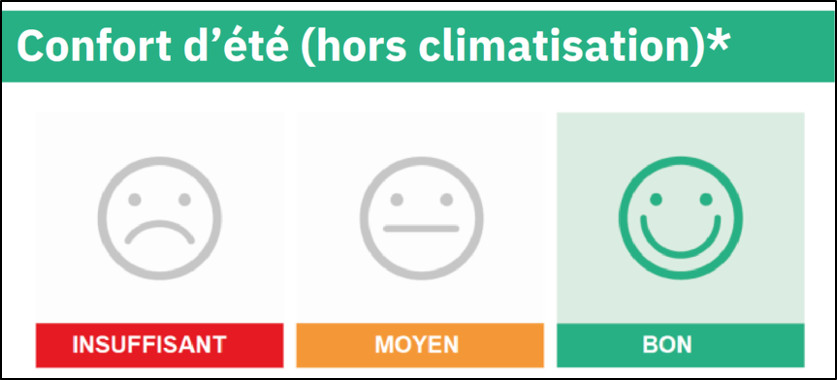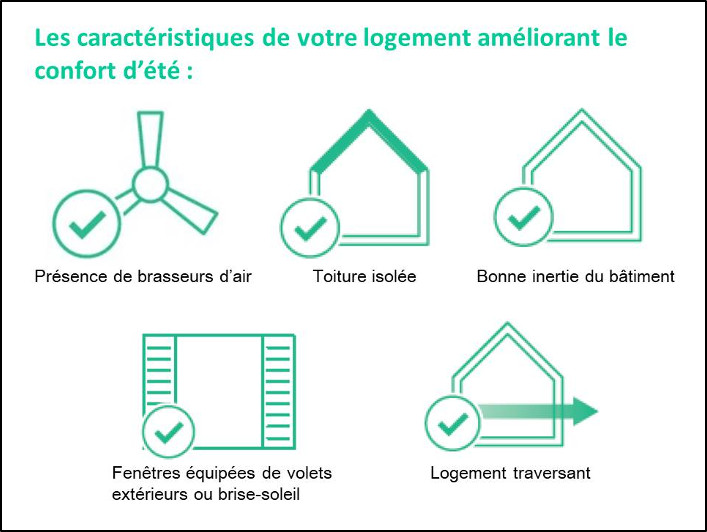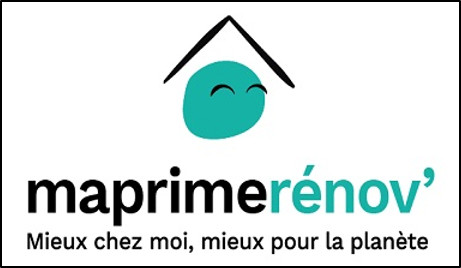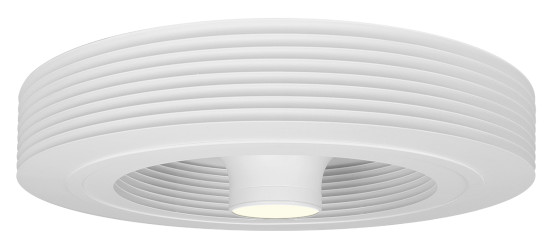1st June 2001. The Thermal Regulations 2000 (RT 2000) come into force, following the Rio and Kyoto agreements. It applies to new buildings.
It introduces a new concept: summer comfort.
For buildings, this means limiting the indoor temperature during the hot season. The conventional indoor temperature or Tic must therefore be lower than a reference temperature.
This initial approach plays a beneficial role in the design of the building envelope. In fact, it has been maintained in new building regulations (RT 2005 and RT 2012). Tic appeared in 2008 in the thermal regulations for existing buildings, inspired by RT 2005.
However, several criticisms have been levelled at this indicator, the main one being that it is out of sync with the discomfort perceived by occupants. What’s more, ceiling fans, which have proved their worth in terms of perceived thermal comfort and deliver significant energy savings, cannot have an impact on Tic.
It wasn’t until January 2022, when the 2020 environmental regulations (RE 2020) came into force for new buildings, that a new indicator was introduced: the degree-hour of discomfort or DH. With this new value, ceiling fans are included in the regulations.
However, today, summer comfort is still at the same stage for renovations to existing buildings. The 2018 update of the existing building regulations maintains the Tic limit.
Fortunately, things are changing: the new energy performance diagnosis, which comes into force on 1 July 2021, opens the door wide to summer comfort.
New DPE (Energy performance diagnosis) : making solutions visible
Summer comfort is reflected in the new DPE (Energy performance diagnosis) by an overall view of the situation, with three possible levels of smileys: insufficient, average and good.

Next, a number of elements that contribute to an effective improvement in summer comfort are highlighted:
- Ceiling fans
- Roof insulation
- Building inertia
- External solar protection: external shutters, blinds, sunscreens, brise-soleil, pergola, trees (ideally deciduous)[i]
- Through-housing

The regulations specify that ceiling fans must be fixed; simple standing fans are not considered.
Roof insulation and the building’s good inertia limit and delay the entry of heat into the building. However, if the windows are left open during the day, the heat will accumulate in the walls with high inertia (walls, floors, heavy ceilings). This is why you need to close the shutters and windows during the day and open them in the evening.
If it’s windy, a walk-through flat is more comfortable. Unfortunately, through-hung studio and T1 apartments are rare. For them, ceiling fans are once again a simple and effective solution.
These elements are available in the text of the DPE Order of 31 March 2021.[ii].
The presence of air circulation fans is one of the 3 basic requirements for obtaining the “good” level (in addition to the fact that the dwelling must be through-going and have a heavy to very heavy inertia).
Ma Prime Rénov’ 2024: the comeback of ceiling fans and summer comfort
Until 2019, ceiling fans were eligible for the energy transition tax credit (CITE)

Since then, its evolution, Ma Prime Rénov’, had forgotten about them. Now, as part of the comprehensive renovation scheme, they are making a comeback, and private customers will be able to incorporate them into their projects.
Other passive devices will also benefit from this support, such as solar protection for glazed walls. In addition, and this may come as a surprise to some, heat pumps (including reversible air/air) are included in this new format of support.
New thermal regulations for existing buildings?
To date, we are not aware of any short-term changes to the thermal regulations that apply to renovations (RT existant). However, the work carried out as part of the BRASSE and B-AIR programmes, enabling better characterisation of ceiling fans, should be able to feed into future regulatory changes, and thus promote better thermal comfort in summer.
[i] On the specific point of trees acting as sunbreakers, this remains to be confirmed. We have submitted a request on this subject to RT-RE Bâtiment website [ii] see pages 31-34 of the pdf document in the link.

Exhale, the first vortex-effect bladeless ceiling fan
Are you a professional? We have a dedicated area for you.
Find Exhale Fans Europe on Linkedin

